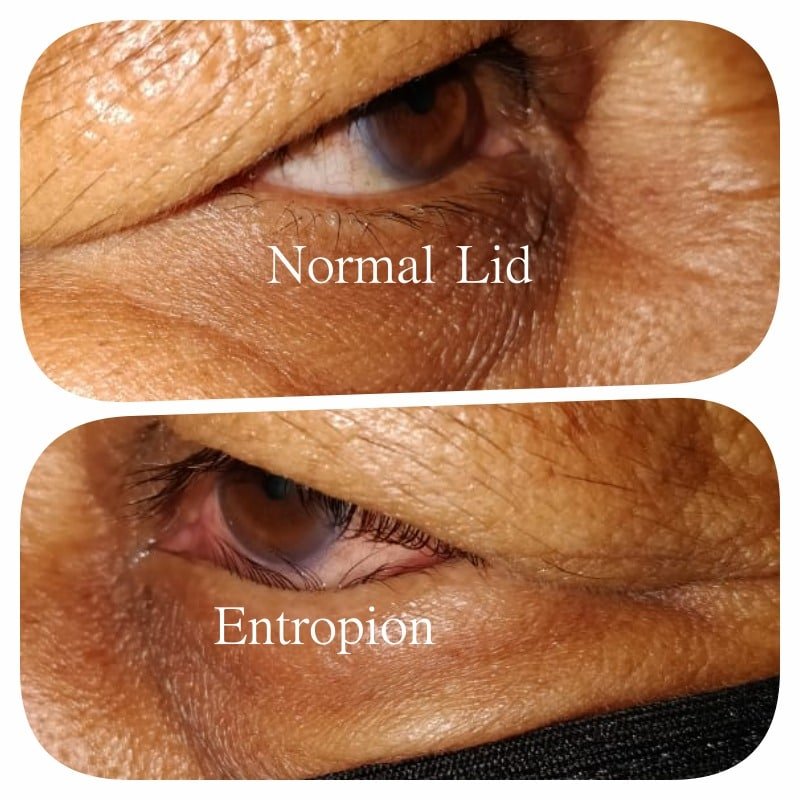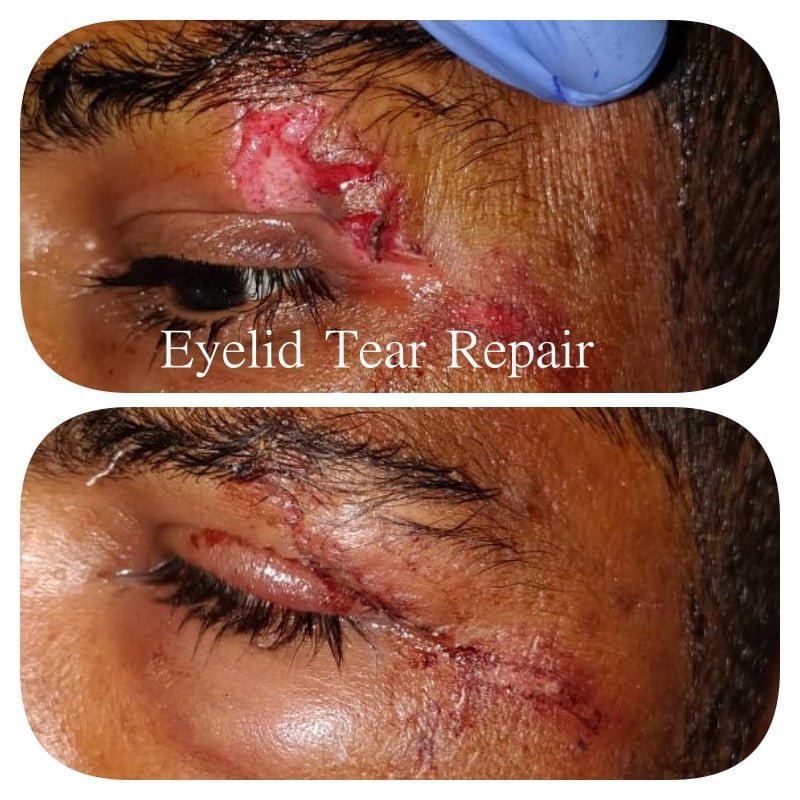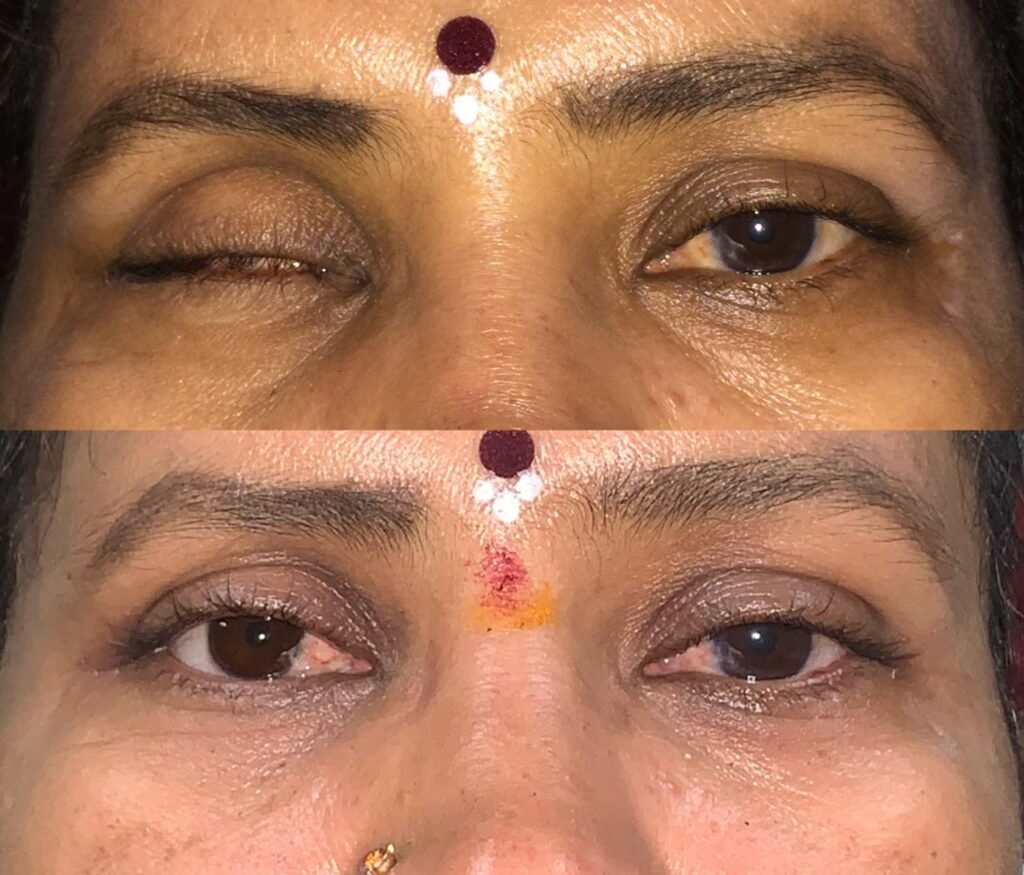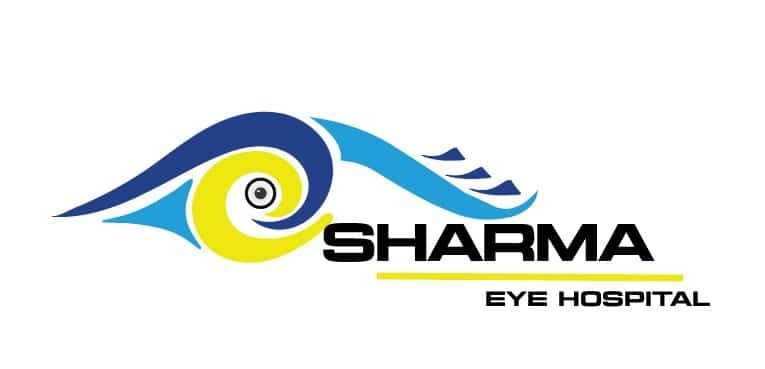

Oculoplasty services
Ophthalmic plastic surgery is a super-specialized branch of ophthalmology that deals with deformities, and cosmetic concerns of the structures around the eye. It is a highly specialized form of plastic surgery that is so close to the eye that you would want to trust an Oculoplastic surgeon, who is an eye microsurgeon as well as a trained plastic surgeon.
Droopy Eyelid (Ptosis)
Droopy eyelid (ptosis) can occur as a result of birth defect, injury, muscle disorder, nerve disorder, or simply due to aging. It gives a sleepy appearance, and can even obstruct vision if severe. Ptosis may also cause excessive forehead wrinkling, abnormal head posture such as chin elevation, and eye fatigue. In children below 8 years of age, severe droop might obstruct development of vision leading to a lazy (amblyopic) eye thus reducing vision. In adults, droopy eyelid is mainly a cosmetic concern. Surgery can correct this problem by repairing the muscle that lifts the eyelid. Several surgical options are available, and the type of surgery used depends upon the severity of the droop. After evaluation, your specialist will decide which surgery best suits your need. Health insurance will cover the costs of ptosis surgery, if it was acquired later in life. Any congenital deformity (present since birth) is not covered by insurance.Radiofrequency cautery ensures a bloodless and painful surgical procedure
Eyelid Malpositions
Eyelid malpositions are abnormal positions of the eyelid, leading to inturning(entropion) or out-turning(ectropion) of the eyelid. This can be present since birth, or secondary to trauma or aging. Eyelid malpositions are common, and often lead to watering, photosensitivity, and even a cosmetic defect. Eyelid malpositions can be corrected with eyelid plastic surgery, and are covered by insurance.

Facial Spasms
Facial spasm is a condition in which facial muscles function abnormally and are no longer under the direct control of the brain. It can affect the entire face, or just the area around the eyes. Four distinct forms of facial spasm are known: Benign Essential Blepharospasm, Hemifacial spasm, Meige syndrome, and Myokymia. Though the actual problem within the nerve is not fully understood and cannot be cured, its effect on facial muscles can be controlled temporarily by injections of Botulinum toxin, a 10 minute out patient procedure

Dacryology: Treatment for the Watering Eye

Cosmetic Artificial Eyes



